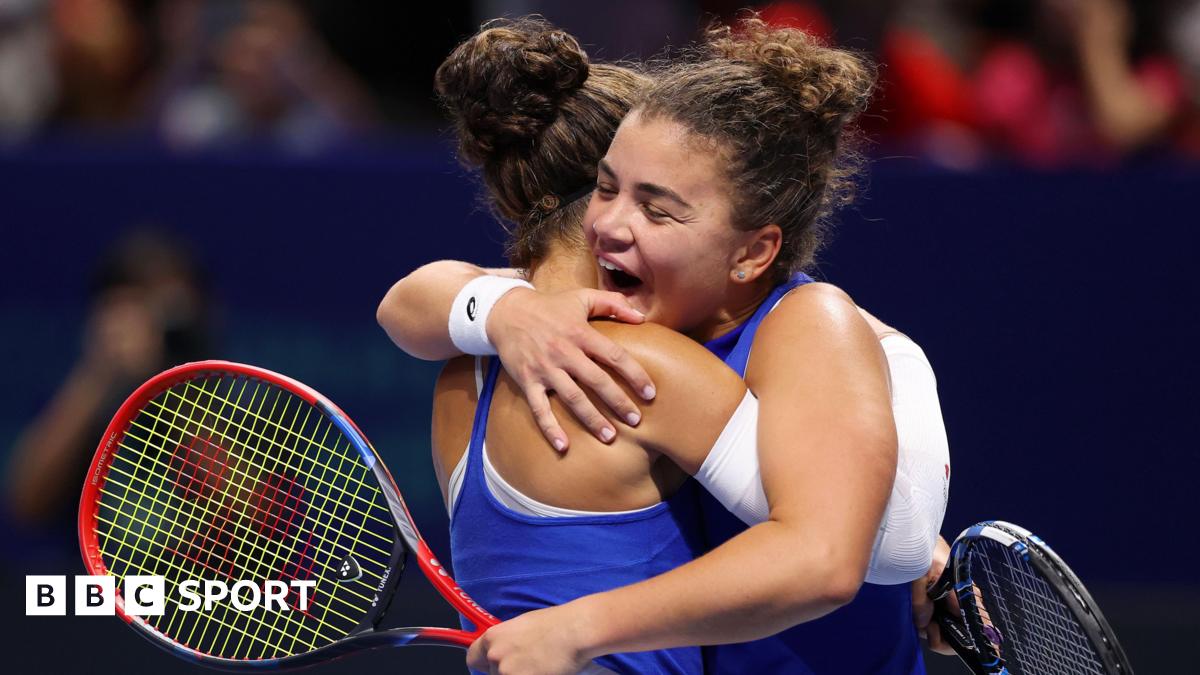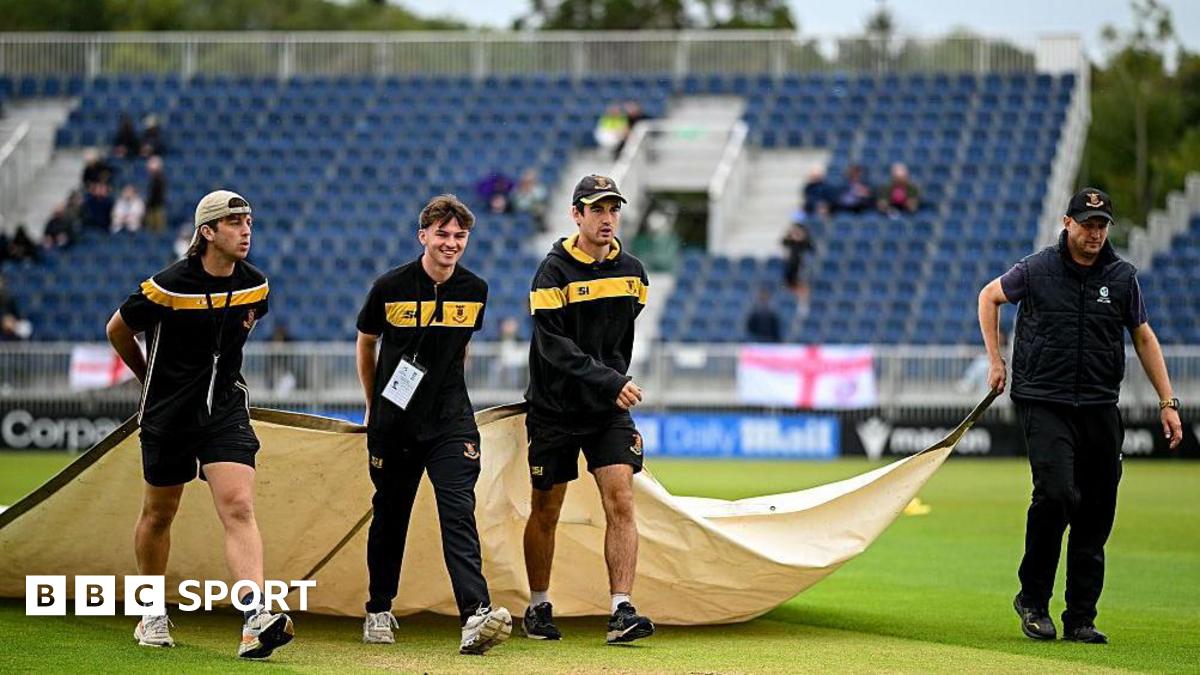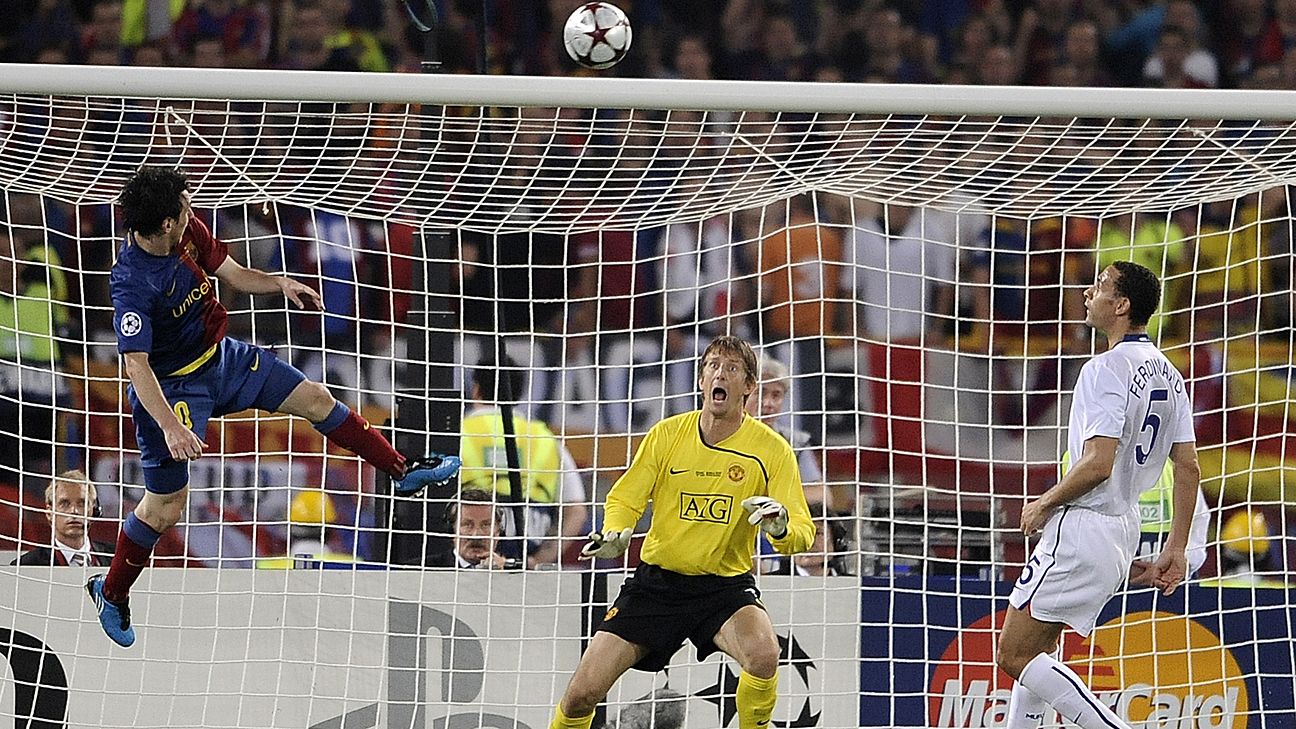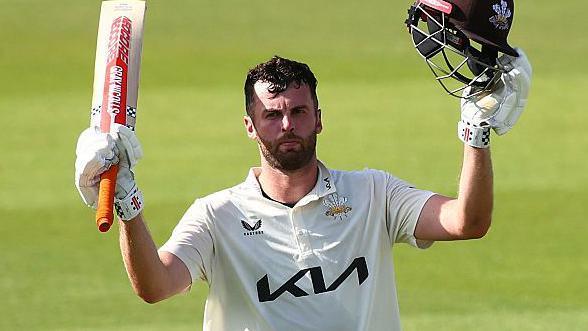 Image source, Getty Images
Image source, Getty Images
Dom Sibley's 305 was the highest of 59 centuries scored against the Kookaburra in the past two weeks
Adam Lanigan
BBC Sport England
Over the past two weeks at county grounds around the country, players have been raising their bats with astonishing regularity.
No fewer than 59 centuries have been scored across the latest two rounds of County Championship matches.
A batter's paradise and a bowler's nightmare, with seamers left scratching their heads at how to use the unfamiliar Kookaburra ball.
Huge scores have been clocked up, none bigger than Surrey's mammoth 820-9 declared against Durham, the highest for 18 years and fourth highest in the history of Championship cricket.
But why have the runs been flowing?
Dukes v Kookaburra
For these two rounds of matches and the two rounds at the end of this month, all Championship games will be played with the Kookaburra ball, whereas normally matches in England use a Dukes.
But what is the difference between the two?
A Dukes ball is hand stitched with six rows of threads. This makes the seam more pronounced than the Kookaburra and it maintains its shape for longer, favouring bowlers searching for seam and swing movement.
The Kookaburra is machine stitched and does not have the same handicraft in its manufacturing. It does swing initially, but loses its shape more quickly and becomes softer.
However, it is better suited to cricket played on dry, hard pitches, as are usually found in Australia, to cope with the abrasive surfaces.
In Test cricket, the Dukes ball is used in England, Ireland and West Indies, whereas the Kookaburra is predominantly used everywhere else.
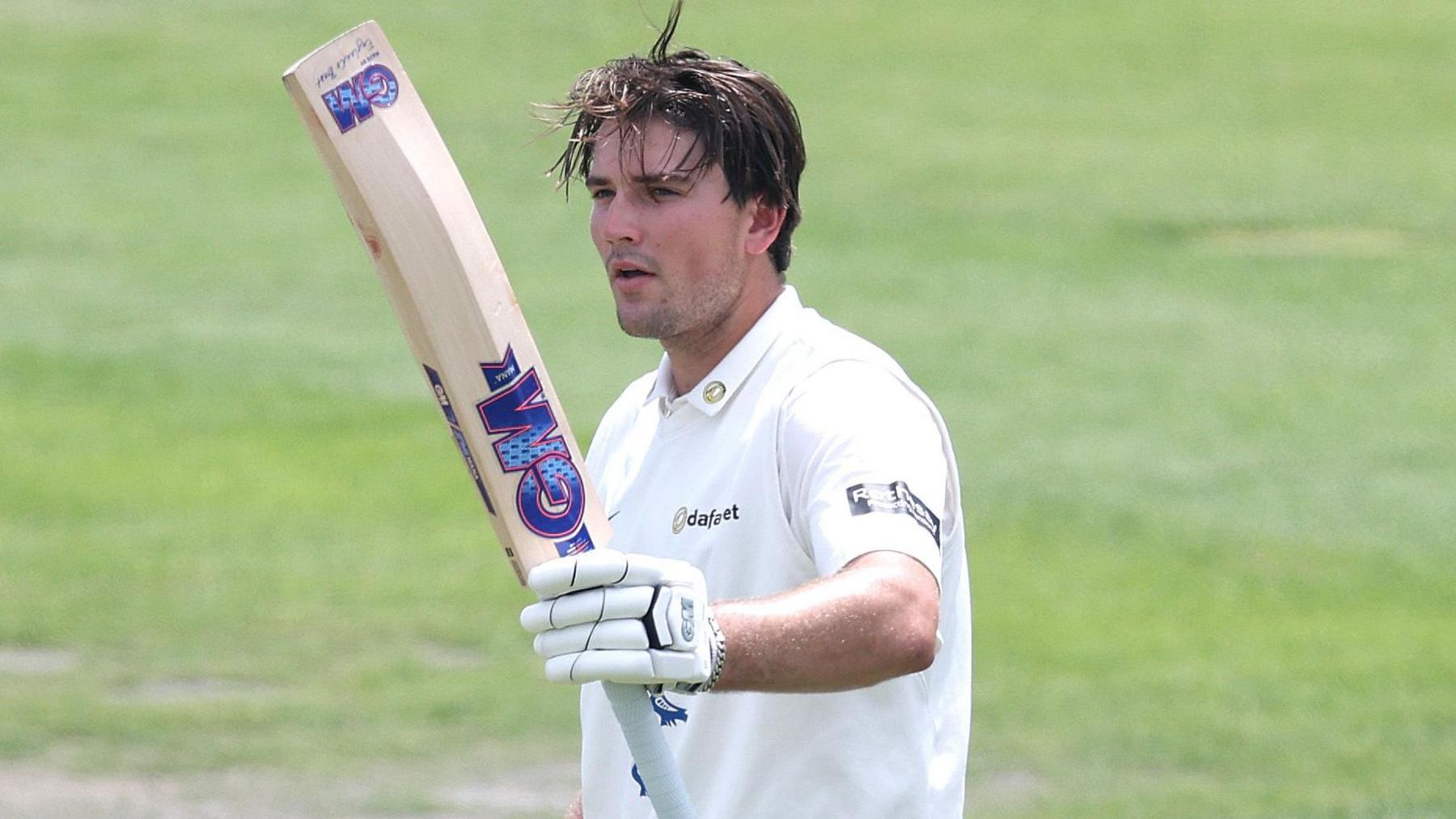 Image source, Getty Images
Image source, Getty Images
Sussex batter James Coles was one of six players to score centuries in both Kookaburra games
Why the Kookaburra experiment?
The Kookaburra is being used as a result of a high-performance review into English cricket led by Sir Andrew Strauss in 2022.
It came on the back of a demoralising 4-0 defeat in the last Ashes series down under earlier that year.
One of the recommendations was to try to improve the skills of bowlers and better prepare English ones for the challenges overseas.
In doing so, the theory was to try to encourage more genuine pace bowling and high-quality spin - the bowling that makes the difference in international cricket.
Two rounds of matches were staged with Kookaburra balls in 2023 in June and July and then four last season, with two in April and two more in August and September.
In 2023, 18 matches produced eight wins, but at the start of 2024, poor weather combined with the Kookaburra delivered 17 draws from 18 fixtures.
That rose to 12 wins from 18 at the end of the summer, with spinners making a significant and decisive contribution.
'Not sure why we're using it'
At its best, red-ball cricket produces a contest that has something in it for both batters and bowlers.
But after watching only 21 wickets fall in their match with Nottinghamshire at Trent Bridge last week, Yorkshire head coach Anthony McGrath was scathing in his criticism of the use of the Kookaburra.
"The match as a whole was not a great watch for spectators with the Kookaburra ball and I'm still not sure why we are using it, to be honest," he said.
"We don't play Test cricket in England with a Kookaburra and if we are thinking about the next series in Australia playing with a Kookaburra, then the people who are going to play in that series probably need to be using a Kookaburra ball as well."
Those views were echoed by former Australia head coach Darren Lehmann, now in charge of Northamptonshire.
He also had to watch bat dominate ball as a high-scoring match with Kent at Canterbury ended in a draw.
"The Kookaburra ball is for Australian conditions on wickets that are harder and have got some carry," he said.
"The Dukes ball, we've tried that before in an Ashes for example. A Dukes ball goes all over the shop in Australia and the game's finished in two days."
Kookaburra games this summer in numbers
Individual scores of 100 or more: 59
Individual scores of 200 or more: 4
Highest score: 305 (Dom Sibley, Surrey v Durham)
Highest team score: 820-9 dec (Surrey v Durham)
Average first innings score: 429.75
First innings scores of more than 450: 15
Most centuries in an innings: 4 (Surrey v Durham; Northants v Kent)
Average runs per match: 1194.66
Average number of wickets per match: 27.05
Five-wicket hauls: 11
Best bowling figures: 7-94 (Liam Guthrie, Northants v Middlesex)
Most runs conceded: 1-247 (George Drissell, Surrey v Durham)
'Develop different skills'
The use of the Kookaburra has had its supporters, though.
England Test captain Ben Stokes may not have liked hearing that his county Durham conceded over 800 runs against Surrey, but he recognises the wider benefits.
That includes the contribution of England's new bowling consultant Tim Southee, a veteran of 107 Tests for New Zealand, predominantly using the Kookaburra ball.
"Tim has built a career on being able to find ways of getting batters out even when it's not in your favour," said Stokes.
"He's passed over knowledge to our bowlers which has actually been invaluable for them, and made them understand that it's not always going to be in your favour.
"So what are we going to do as a unit to try to create some pressure to get wickets when it's flat?"
And while using the ball is a challenge for bowlers, Warwickshire seamer Ethan Bamber admitted that trying to improve is part of the cricketer's job.
"It is different," he told BBC Radio WM. "You don't get as much consistent help from the ball.
"It creates good games – last week we almost had a cracking game [against Somerset], and it makes you develop different skills, and tough, long days of cricket. Sometimes that's really good.
"One of the reasons we all play is to try to get better and find out how good we can be. This is a way of doing it."
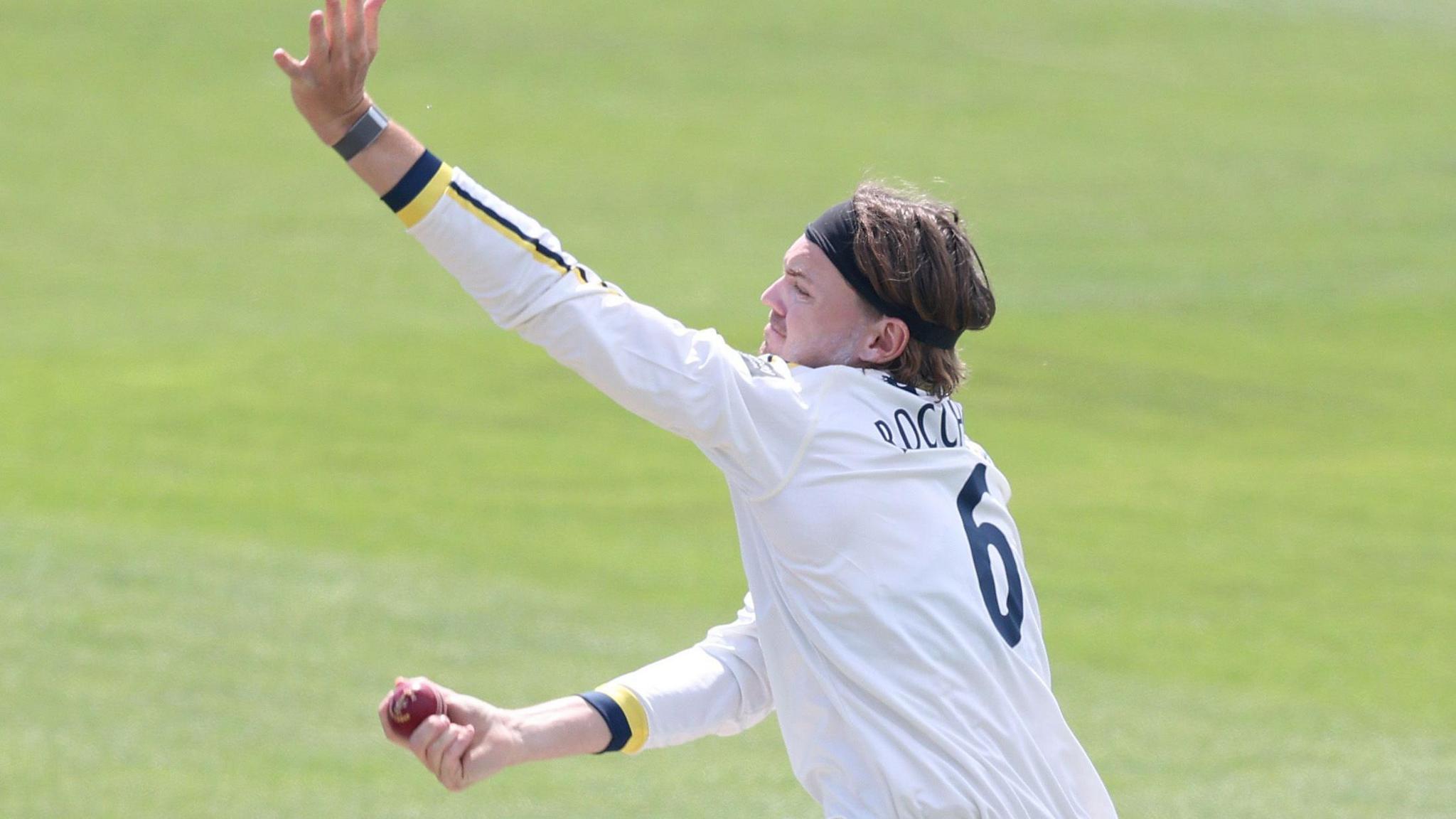 Image source, Getty Images
Image source, Getty Images
Corey Rocchiccioli was signed by Warwickshire to play in the four rounds of Kookaburra games
'Same ball, different continent'
As batters have accumulated runs for fun with centuries scored by batters in every position from one to nine, there has been a lot of toil for bowlers.
Only 11 five-wickets hauls have been recorded in these matches, with - significantly - seven of those achieved by overseas bowlers already accustomed to the Kookaburra.
Two were achieved by Warwickshire's Corey Rocchiccioli, the Australia A off-spinner.
He has been recruited for a four-game stint in the Championship, specifically to cover these Kookaburra fixtures.
"The ball ages differently," Rocchiccioli told BBC Radio WM. "It would be the exact same if you put a bunch of Dukes in some Australian cricketers' hands back home. We've got to try and adjust.
"You're playing in the heat with the dry wickets here in the middle of your summer. It's the same sort of thing.
"There's going to be pain points, challenge points, the boys haven't bowled with them as much as I have.
"I've grown up bowling with it, so I'm just bowling with the same ball on another continent."
Cricket: Corey Rocchiccioli enjoying life with the Bears
The weather and other factors
The majority of the past two rounds of matches have been played under blue skies on hot days, conditions that are seen as ideal for batting.
Throw in a very dry summer and outfields are barer and faster, again in the batters' favour.
The classic example is the famous Test at The Oval in the summer of 1976 between England and West Indies, when Viv Richards scored 291 in those conditions on a yellow outfield.
And batters have thrived against the Dukes ball in the past fortnight too, with England's victory over India in the first Test at Headingley producing the 10th highest match aggregate of runs, external in Test history.
Shoehorning in Championship fixtures between a glut of T20 games has also been a test for ground-staff.
As they prepare wickets for the biggest games at their venues on the most central pitches, some of these matches, including the run-fest at the Kia Oval, have been played more towards the edge of the square.
That creates a lop-sided short boundary, which good batters on a good pitch are able to exploit.
But, while batters may be dominating at the moment, it will probably be a different story in September with 10:30 BST starts and the Dukes ball doing plenty.
That is the enduring beauty of red-ball cricket and the different tests it provides.
Is the County Championship ball a problem?

 2 months ago
48
2 months ago
48




